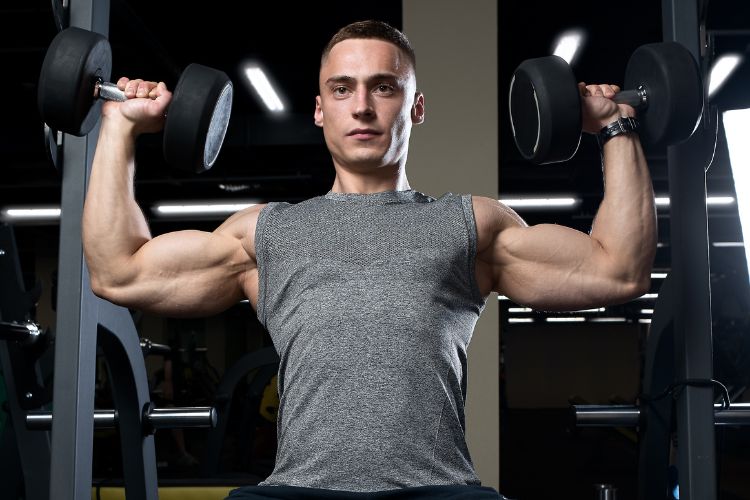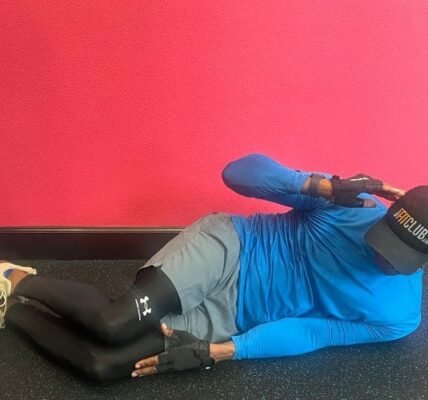
Starting a fitness journey can be both exciting and overwhelming, especially when it comes to targeting specific areas of the body. For beginners, the upper body is a great place to start because it includes some of the most functional muscle groups, such as the chest, shoulders, back, and arms. Building strength in these areas not only improves your physical appearance but also enhances your posture, daily performance, and overall confidence. In this guide, we’ll walk you through beginner-friendly upper body workouts, tips for proper form, and how to create a sustainable routine.
Why Beginner Should Focus on Upper Body Workouts?
Before diving into the exercises, it’s important to understand why upper body training is essential. Your upper body plays a critical role in everyday activities like lifting groceries, pushing doors, or carrying a backpack. Strengthening these muscles can:
- Improve posture by strengthening the back and shoulders.
- Reduce the risk of injury by stabilizing joints.
- Boost metabolism as muscle mass increases.
- Enhance overall athletic performance.
For beginners, starting with bodyweight exercises or light weights is key to building a solid foundation. Let’s explore some effective workouts to get you started.
Essential Beginner Upper Body Muscle Groups to Target
To create a balanced upper body workout, it’s important to focus on the following muscle groups:
- Chest (Pectorals): Responsible for pushing movements.
- Back (Latissimus Dorsi, Rhomboids, Trapezius): Essential for pulling movements and posture.
- Shoulders (Deltoids): Help with lifting and rotating the arms.
- Arms (Biceps and Triceps): Assist in pulling and pushing motions.
- Core (Abs and Obliques): While not part of the upper body, a strong core supports all upper body movements.
By targeting these muscle groups, you’ll ensure a well-rounded workout that promotes strength and symmetry.
Beginner Upper Body Workouts: Step-by-Step Guide
Here’s a list of beginner-friendly exercises that require minimal equipment. You can perform these at home or in the gym.
1. Push-Ups (Chest, Shoulders, Triceps)
Push-ups are a classic bodyweight exercise that targets the chest, shoulders, and triceps. They also engage the core for stability.
How to Do It:
- Start in a plank position with your hands slightly wider than shoulder-width apart.
- Lower your body until your chest nearly touches the floor, keeping your elbows at a 45-degree angle.
- Push yourself back up to the starting position.
Beginner Modification: Perform knee push-ups if standard push-ups are too challenging.
2. Dumbbell Bench Press (Chest, Shoulders, Triceps)
This exercise is great for building chest strength and can be done with dumbbells or a barbell.
How to Do It:
- Lie on a bench with a dumbbell in each hand, palms facing forward.
- Lower the dumbbells until your elbows are at a 90-degree angle.
- Press the weights back up to the starting position.
Tip: Start with light weights to focus on form.
3. Bent-Over Rows (Back, Biceps) Beginner Upper Body Workout
Bent-over rows are excellent for strengthening the back and biceps.
How to Do It:
- Stand with your feet shoulder-width apart, holding a dumbbell in each hand.
- Bend your knees slightly and hinge at the hips, keeping your back straight.
- Pull the dumbbells toward your torso, squeezing your shoulder blades together.
- Lower the weights back to the starting position.
4. Shoulder Press (Shoulders, Triceps)
The shoulder press targets the deltoids and triceps, helping to build strong, defined shoulders.
How to Do It:
- Sit or stand with a dumbbell in each hand at shoulder height, palms facing forward.
- Press the weights overhead until your arms are fully extended.
- Lower the dumbbells back to shoulder height.
5. Bicep Curls (Biceps) Beginner Upper Body Workout
Bicep curls are a simple yet effective way to isolate and strengthen the biceps.
How to Do It:
- Stand with a dumbbell in each hand, palms facing forward.
- Curl the weights toward your shoulders, keeping your elbows close to your body.
- Slowly lower the dumbbells back to the starting position.
6. Tricep Dips (Triceps)
Tricep dips are a great bodyweight exercise for targeting the back of the arms.
How to Do It:
- Sit on the edge of a bench or chair with your hands gripping the edge.
- Slide your hips off the bench and lower your body by bending your elbows.
- Push yourself back up to the starting position.
Beginner Modification: Keep your feet closer to the bench for less resistance.
7. Plank with Shoulder Taps (Core, Shoulders)
This exercise strengthens the core while engaging the shoulders.
How to Do It:
- Start in a plank position with your hands directly under your shoulders.
- Tap your right shoulder with your left hand, then return to the starting position.
- Alternate sides while keeping your hips stable.
Tips For Proper Form And Safety With Beginner Upper Body Workout
As a beginner, mastering proper form is crucial to prevent injuries and maximize results. Here are some tips:
- Warm-Up First: Spend 5-10 minutes warming up with dynamic stretches or light cardio to prepare your muscles.
- Start Light: Use light weights or bodyweight to focus on form before increasing intensity.
- Engage Your Core: Keep your core tight during exercises to stabilize your body.
- Breathe Properly: Exhale during the exertion phase (e.g., lifting) and inhale during the relaxation phase (e.g., lowering).
- Rest Between Sets: Take 30-60 seconds of rest between sets to recover.
Creating a Beginner Upper Body Workout Routine
Now that you’re familiar with the exercises, it’s time to create a routine. Here’s a sample plan:
Day 1: Full Upper Body Workout
- Push-Ups: 3 sets of 8-12 reps
- Dumbbell Bench Press: 3 sets of 10-12 reps
- Bent-Over Rows: 3 sets of 10-12 reps
- Shoulder Press: 3 sets of 10-12 reps
- Bicep Curls: 3 sets of 12-15 reps
- Tricep Dips: 3 sets of 8-12 reps
- Plank with Shoulder Taps: 3 sets of 20 taps (10 per side)
Day 2: Rest or Active Recovery
3: Repeat Full Upper Body Workout
4: Rest or Active Recovery
5: Repeat Full Upper Body Workout
6-7: Rest or Light Cardio
Progression Tips for Beginners
As you get stronger, it’s important to progressively challenge your muscles. Here’s how:
- Increase Reps or Sets: Gradually add more reps or sets to your exercises.
- Add Weight: Once bodyweight exercises feel easy, incorporate light dumbbells or resistance bands.
- Try Variations: Experiment with different exercise variations to keep your routine fresh.
- Track Your Progress: Keep a workout journal to monitor your improvements.
ommon Mistakes to Avoid
- Skipping Warm-Ups: Failing to warm up can lead to injuries.
- Using Too Much Weight: Start light to avoid compromising your form.
- Neglecting Rest Days: Overtraining can hinder progress and lead to burnout.
- Poor Posture: Maintain proper alignment to prevent strain on your joints.
The Importance of Nutrition and Recovery
Building strength isn’t just about working out; nutrition and recovery play a vital role. Here’s how to support your upper body workouts:
- Eat Enough Protein: Protein is essential for muscle repair and growth. Include lean sources like chicken, fish, eggs, and beans in your diet.
- Stay Hydrated: Drink plenty of water to keep your muscles functioning optimally.
- Get Enough Sleep: Aim for 7-9 hours of sleep per night to allow your body to recover.
- Stretch Regularly: Incorporate stretching or yoga to improve flexibility and reduce soreness.
Staying Motivated on Your Fitness Journey
Starting a new workout routine can be challenging, but staying consistent is key. Here are some tips to stay motivated:
- Set Realistic Goals: Start with small, achievable goals and celebrate your progress.
- Find a Workout Buddy: Exercising with a friend can make workouts more enjoyable.
- Mix It Up: Try new exercises or routines to keep things interesting.
- Track Your Progress: Take photos or measurements to see how far you’ve come.
Upper body workouts are a fantastic way for beginners to build strength, improve posture, and boost confidence. By starting with simple exercises and focusing on proper form, you’ll set yourself up for long-term success. Remember, consistency is key, and progress takes time. Celebrate small victories along the way, and don’t be afraid to challenge yourself as you grow stronger. With dedication and patience, you’ll soon see the results of your hard work. Happy training!




